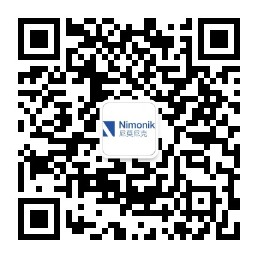
应急管理部发布《工贸企业有限空间作业安全规定》与《工贸企业有限空间重点监管目录》
Ministry of Emergency Management: Announcement on Publishing the “Provisions on the Safety of Operations in Confined Spaces of Industry and Trade Enterprises” and the “Catalog of Key Supervision in Confined Spaces of Industry and Trade Enterprises”
应急管理部12月发布《工贸企业有限空间作业安全规定》,修订废止了2013年发布的《工贸企业有限空间作业安全管理与监督暂行规定》。
新规定明确要求有限空间出入口应采取上锁、隔离栏、防护网等物理隔离措施;强调企业必须配备专职或兼职的有限空间作业监护人,且监护人员应当具备相应的安全知识和应急处置能力,能够正确使用防护用品和应急救援装备。对于发包作业的,企业要对现场作业进行安全检查,督促承包单位有效落实各项安全措施;要求企业应当每年至少组织一次有限空间作业专题安全培训,对作业审批人、监护人员、作业人员和应急救援人员培训有限空间作业知识和技能;企业应当制定现场处置方案,每半年至少组织一次演练。
同月发布配套文件《工贸企业有限空间重点监管目录》以落实《工贸企业有限空间作业安全规定》第十六条要求。目录列举了冶金、有色、建材、机械、轻工、纺织和烟草7大行业中易发生中毒和窒息事故的有限空间,作为工贸安全监管部门监督检查和企业日常安全管理的重点。目录未列出的有限空间,企业也应当按规定落实相应的安全风险管控措施。经辨识分析存在硫化氢、一氧化碳、二氧化碳等中毒和窒息风险的其他有限空间,也应当纳入重点范围。
The Ministry of Emergency Management issued the “Provisions on the Safety of Operations in Confined Spaces of Industry and Trade Enterprises” in December, which revised and repealed the “Interim Provisions on Administration and Supervision of Operational Safety in Confined Spaces at Industrial and Trading Enterprises” issued in 2013.
The new Provisions clearly require that entry of confined space should be physically isolated using lock, isolation fences, protective nets, etc. It emphasizes that enterprises must be equipped with full-time or part-time supervisor for confined space operations, where the designated supervisor should have the appropriate safety knowledge and emergency response capabilities and be able to correctly use protective equipment and emergency rescue equipment. As regarding the vendor’ confined space operations, the enterprise should carry out safety inspections of the working site operations and supervise the vendor to effectively implement the safety protection measures. The Provisions also require that enterprise should organize confined space operation safety training at least on an annual basis to build up corresponding knowledge and skills for the operation approver, supervisor, operators and emergency rescue personnel; the enterprise should develop on-site emergency disposal program and carry out emergency response drill at least once every six months.
In the same month, the supporting document “Catalog of Confined Spaces subject to key supervision for Industry and Trade Enterprises” was released to implement the requirements of Article 16 of the “Provisions on the Safety of Operations in Confined Spaces of Industry and Trade Enterprises”. The catalog lists typical high risk confined spaces with poisoning and asphyxiation risks as the key supervision by the safety authority in seven key industries, including metallurgy, non-ferrous metals, building materials, machinery, light industry, textile, and tobacco. For confined spaces not listed in the Catalog, corresponding safety risk control measures should also be implemented. Other confined spaces that have been identified with risks of poisoning and asphyxiation by hydrogen sulfide, carbon monoxide, carbon dioxide, etc. should also be included in the scope of supervision focus.
最新国家法律法规Policy Initiatives & Developments
The State Council: The Action Plan for Continuous Improvement of Air Quality
该《行动计划》是我国继2013年《大气污染防治行动计划》和2018年《打赢蓝天保卫战三年行动计划》之后的第三个“大气十条”,明确了推动空气质量持续改善的总体思路、改善目标、重点任务和责任落实。
借鉴前二期行之有效的做法,坚持“减煤、汰后、控车、治污和抑尘”五大路径,依然聚焦重点区域(城市数量进行微调到82个),但行动计划适用所有PM2.5不达标区域/城市,要求其编制限期达标规划,明确达标路线图及重点任务,并向社会公开。
新大气十条的目标设定基本对标十四五规划和污染攻坚方案,到2025年PM2.5, VOC和氮氧化物都下降10%。仅对北京提出绝对目标,即PM2.5浓度的达到32微克每立方米。
《行动计划》部署了涉及产业结构、能源结构、交通结构、面源污染治理等十个方面工作任务。其中明确了法规标准的修订计划。环境标准制修订可能意味着更高的治污成本和合规挑战,或可进一步推动企业从末端治理向源头替代转变。
The Action Plan is the third “Air Ten Articles” in air pollution management, following the 2013 “Action Plan for Air Pollution Prevention and Control” and the 2018 “Three-year Action Plan for Winning the Blue-Sky Defense War”, it clearly defines the goals, key tasks and responsibilities for promoting the improvement of air quality.
Taking the effective practices of the previous two Action Plans, the newly issued version adheres to the five major pathways, i.e. “coal reduction, phase out backward production, vehicle control, pollution control and dust suppression”, and still focuses on key regions (82 cities). However, besides the key regions, the Action Plan also applies to all regions/cities that don’t achieve air attainment up to the PM2.5 standards. All regions/cities shall develop a program to attain air quality with corresponding roadmap and key tasks, and shall disclose the program to public.
The goals of the new “Ten Articles” are basically in line with the “14th Five-Year Plan” and the “Pollution Control Program”, which aims to reduce PM2.5, VOC, and NOx by 10% as of 2025. Specially for Beijing, an absolute PM2.5 concentration target is set to be 32 ug/m3.The Action Plan deploys tasks in ten areas including industrial re-structuring, energy structuring, transportation structuring, and management of fugitive air pollution. Revision plans on regulations and standards are also proposed in the Action Plan, where new development or revision of environmental standards may imply higher pollution treatment costs and compliance challenges, therefore further promote enterprises to shift from end-of-pipe treatment to source substitution.
National Development and Reform Commission: Catalogue for Guiding Industry Restructuring (2024 Version)
《产业结构调整指导目录》自2005年制订发布,2011年、2013年和2019年分别进行了修订或修正。《目录》是引导社会投资方向、政府管理投资项目,制定实施财税、信贷、土地、进出口等政策的重要依据,本次修订在保持总体连续稳定的同时,聚焦前期实施中的问题和各方意见建议,有针对性地对框架结构、行业设置、条目设置、表述规范等进行了调整优化。2024版目录共有条目1005条,其中鼓励类352条、限制类231条、淘汰类422条。总条目减少473条,其中鼓励类减少469条、限制类增加16条、淘汰类减少20条。对限制类项目,禁止新建,现有生产能力允许在一定期限内改造升级;对淘汰类项目,禁止投资并按规定期限淘汰。The “Catalogue for Guiding Industry Restructuring” has been formulated and released since 2005, and was revised or amended in 2011, 2013, and 2019 respectively.The “Catalogue” is an important basis for guiding the direction of social investment, managing investment projects by the government, and formulating and implementing policies on finance, taxation, credit, land, import and export, etc. While maintaining the overall continuity and stability, the current revision focuses on the problems in the previous implementation and the opinions and suggestions of various parties, and adjusts and optimizes to the framework structure, industry settings, items settings, and terminologies in a targeted manner.
The 2024 version of the catalog has a total of 1,005 items, of which 352 are encouraged, 231 are restricted and 422 are eliminated. The total number of items has been reduced by 473, of which 469 items have been reduced in the encouraged category, 16 items have been increased in the restricted category, and 20 items have been reduced in the eliminated category. For projects in the restricted category, new construction is prohibited, and existing production capacity is allowed to be transformed and upgraded within a certain period; for projects in the eliminated category, investment is prohibited, and phase-out of projects shall be implemented by the stipulated period.
生态环境部等部门:京津冀及周边地区、汾渭平原2023-2024年秋冬季大气污染综合治理攻坚方案
Ministry of Ecology and Environment and other departments: Action Plan for Comprehensive Control of Air Pollution in Autumn and Winter From 2023 to 2024 in Beijing-Tianjin-Hebei Region and Its Surrounding Areas and Fen-Wei Plain
方案由生态环境部等18部门联合印发,提出以减少重污染天气和降低细颗粒物(PM2.5)浓度为主要目标,强化多污染物协同控制,持续开展秋冬季大气污染综合治理攻坚行动。2023—2024年秋冬季京津冀及周边地区和汾渭平原大气污染治理目标分两个阶段设置,整个秋冬季期间,各城市完成PM2.5浓度控制目标和重度及以上污染天数控制目标(附件1)。主要任务包括有序推进钢铁、水泥及焦化行业超低排放改造、挥发性有机物(VOCs)综合治理、散煤治理等“十四五”规划重大工程。以及深入开展柴油货车、锅炉炉窑、扬尘、秸秆等综合治理,积极培育大气治理标杆企业等。The Action Plan, jointly issued by the Ministry of Ecology and Environment and 18 other departments, proposes to reduce heavily polluted weather and fine particulate matter (PM2.5) concentration as the main objectives, strengthens the synergistic control of multiple pollutants, and continues to carry out comprehensive air pollution control and combating actions in the fall and winter.The air pollution control goals in the Beijing-Tianjin-Hebei region and its surrounding areas and the Fen-Wei Plain during the autumn and winter of 2023-2024 are set in two stages. Throughout the autumn and winter period, cities shall achieve the PM2.5 concentration control target and the control target on days of heavy polluted weather (Annex 1).
The main tasks include the promotion of major projects under the 14th Five-Year Plan, such as ultra-low emission renovation of the iron and steel, cement and coking industries, comprehensive treatment of volatile organic compounds (VOCs), and bulk coal control. As well as carrying out treatments of diesel trucks, boilers, and kilns, dust, straw, etc., and actively cultivating model enterprises for air pollution control.
最新国家标准Latest National Standards
TSG Z0008-2023 特种设备使用单位安全总监和安全员考试指南
TSG Z0008-2023 Guideline of Examination for Safety Supervisors and Safety Staffs of Special Equipment Users
立法草案 Policy Initiatives & Developments
生态环境:污染源自动监控设施现场监督检查技术指南(征求意见稿)
Ministry of Ecology and Environment: Technical Guidelines of On-site Supervision and Inspection of Automatic Pollution Source Monitoring Facilities (Draft for Consultation)
征求意见稿修订了2012年印发的《污染源自动监控设施现场监督检查技术指南》。本次修订,补充完善了2015年以来法律法规明确的与污染源自动监控有关的13类违法违规行为的具体情形,对现场监督检查时发现的问题进行聚焦和分类,便于后续移交立案和调查处理;删除了存在争议的“不正常运行”情形,以及资质检查等不适应国家“放管服”改革要求的内容,为企业和监督检查人员减负;细化了比对核查的三种形式(标样核查、执法比对、比对监测)的程序方式。The draft revised the ” Technical Guidelines of On-site Supervision and Inspection of Automatic Pollution Source Monitoring Facilities ” issued in 2012.
This revision supplements 13 specific circumstances of violations related to automatic monitoring of pollution sources, which have been defined in laws and regulations since 2015. The Revision focuses and classifies the issues discovered during on-site supervision and inspection to facilitate for further investigation; The controversial “abnormal operation” situations were deleted, as well as the qualification requirement and other contents that are not suitable for the national administration reform, to reduce the burden on enterprises and supervisory inspectors; the procedural methods of three forms of comparison verification (standard sample verification, enforcement comparison, comparative monitoring) are refined.
关于公开征求《国家危险废物名录(修订稿)(征求意见稿)》意见的通知
Notice on Requesting Public Comments on the “National Hazardous Wastes Catalogue (Revised Draft) Draft for Consultation)”
《名录(修订稿)(征求意见稿)》主体内容没有变化。本次修订内容包括:
- l 修订了正文第六条,提出将经鉴别具有危险特性的、属于危险废物的,根据其主要有害成分和危险特性首先对照本名录中已有废物代码进行归类;
- l 修订了附表,其中对五类废物添加标注限定(HW02、HW03、HW12、HW40和HW45)、新增4种危险废物(锡火法冶炼烟气处理过程)、删减2种危险废物(阳极氧化污泥、苯酚丙酮生产过程中的重馏分)、合并或拆分3种危险废物、废物描述修改18种;
- l 修订了附录的2个废物种类:序号为9的含油金属屑的利用环节豁免条件与序号为16的含铬皮革废碎料运输环节的豁免内容和豁免条件。
There are no changes to the main content of the Catalogue (Revised Draft) (Draft for Comment). The revision includes:
- l Revision of Article 6: Proposing that wastes determined as having hazardous characteristics and to be hazardous wastes should firstly be categorized according to their main hazardous components and characteristics against the existing waste codes in the Catalogue;
- l Revision of the appendix: Including the addition of annotation for five categories of waste (HW02, HW03, HW12, HW40, and HW45), the addition of four new hazardous wastes (tin pyrometallurgical flue gas treatment process), the deletion of two hazardous wastes (anodic oxidizing sludge, heavy fraction from phenol and acetone production), the merging or splitting of three hazardous wastes, and the modification of the descriptions of 18 types of wastes;
- l Revision of 2 waste types in the appendix: Revising the exemption conditions for the utilization of oily metal scraps (serial No.9) and exemptions and conditions for the transportation of chromium-containing leather scrap (serial No.16).
最新地方性法规 Regional Updates
Guangdong: Standard for Defining Key Fire Safety Units in Guangdong Province
标准规定了四大类32种消防安全重点单位界定情形,相较于2016版界定标准,特别是工业领域,本版量化了界定标准,缩小了消防安全重点单位范围。以下为与工业建筑相关的部分界定标准内容:
(二十四)设有单体建筑面积大于2000平方米的甲类厂房,或者单体建筑面积大于6000平方米的乙类厂房,或者单体建筑面积大于3000平方米乙类高层厂房的企业。
(二十六)设有占地面积大于300平方米的甲、乙类仓库,占地面积大于1500平方米或者总建筑面积大于3000平方米丙类仓库的企业。
(二十七)装置设备、罐区、建筑区占地面积大于10000平方米的易燃易爆化学物品生产、充装、储存、供应、销售企业;
(二十八)同一建筑内员工在100人以上的服装、鞋帽、玩具、食品加工、电子生产、医药、家具、电镀等劳动密集型生产、加工企业。
The standard stipulates the definition of 32 key fire safety units in four categories. Compared with the 2016 version of the definition standard, the newly issued version quantifies the definition standard and narrows the scope of key fire safety units especially in the industrial field. The definition standards related to industrial buildings are listed as follows:
(24) Enterprises that possess Category A workshop with a single building area greater than 2,000 square meters, a Category B workshop with a single building area greater than 6,000 square meters, or a Category B high-rise workshop with a single building area greater than 3,000 square meters.
(26) Enterprises with Category A and B warehouses covering an area greater than 300 square meters, Category C warehouses covering an area greater than 1,500 square meters, or a total construction area greater than 3,000 square meters
(27) Enterprises that produce, fill, store, supply, and sell flammable and explosive chemicals with equipment, tank areas, and construction areas covering an area of more than 10,000 square meters;
(28) Labor-intensive production and processing enterprises such as clothing, shoes and hats, toys, food processing, electronic production, medicine, furniture, electroplating, etc. with more than 100 employees in the same building.
Zhejiang: Management Measures for the Automatic Monitoring of Pollution Sources in Zhejiang Province (Trial)
办法适用于本省行政区域内列入环境监管重点单位名录的水环境和大气环境排污单位,实行排污许可重点管理且排污许可证载明有自动监测要求的排污单位。办法规定了污染源自动监控设备安装联网、运行维护、数据有效性判定、监督管理、数据执法应用、相关违法行为认定等内容。其中,自动监测历史数据、设备运行维护记录等台账资料保存时间不少于5年,录像资料保存时间不少于90日。
The Measures apply to water and air pollutants discharge entities listed as the key environmental supervision units of administrative region. Pollutant discharge units that implement key management of pollutant discharge licenses and whose pollutant discharge licenses specify automatic monitoring requirements.The Measures provide for the installation and networking of pollution source automatic monitoring equipment, operation and maintenance, data validity determination, supervision and management, data enforcement applications, related violations of the law, and other content.
Among them, ledger data such as automatic monitoring historical data and equipment operation and maintenance records shall be kept for no less than 5 years, and video recording data shall be kept for no less than 90 days.







 沪公网安备31010602007801
沪公网安备31010602007801